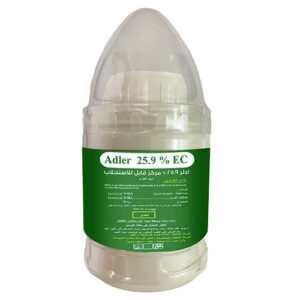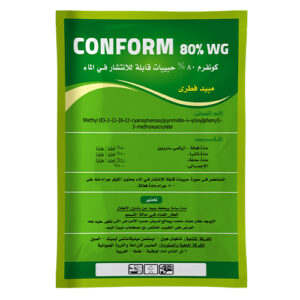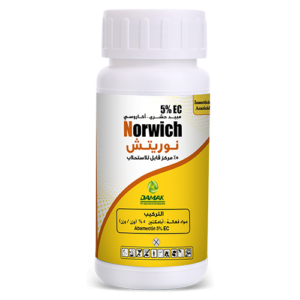Pesticide Classification: Fungicide
Chemical group: Inorganic compounds
Chemical composition: Copper hydroxide, Cu(OH)2
COPRAX is a wettable powder; each kilogram contains 770 g of copper hydroxide equivalent 500 g of metallic copper.
Mode of action:
The pesticide has many ways of affecting fungi, spores and cells of fungi and bacteria absorb copper during their growth, which causes toxicity to spores and their death, copper also inhibits the enzymatic activity inside the cells of the pathogenic fungi, which causes the cessation of vital activities and thus the death of the mycelium of the fungus
Systemic action inside the plant:
Non-systemic pesticide works by contact.
Pesticide efficacy:
Broad spectrum preventive pesticide against fungal and bacterial diseases, it should be sprayed on the vegetative growth before the germination of spores of the pathogenic fungus and occurrence of injury.
Diseases that are controlled by COPRAX: according to the recommendations of the pesticides committee of the Ministry of Agriculture and land reclamation
| Crop | Disease | Application rate |
| Grapes | downy mildew | 250 g / 100 L water |
General recommendations for use:
It is a broad spectrum pesticide against fungal and bacterial diseases.
| Crop | Disease | Dosage/concentration |
| Grapes | Downy mildew | 250 g / 100 L water |
| Tomatoes – potatoes | Early and late blight | 250 g / 100 L water |
| Citrus | Lichens | 350 g / 100 L water |
| Peach | Leaf curl | 180 g / 100 L water |
PHI: 5 days on grape fruits and 14 days on grape leaves.
Maximum residue limits in grapes (MRL): 50 mg / kg of grapes.
Application method: Spraying on the vegetative growth.
Product advantages:
Copper does not decompose like organic pesticides, but the water molecule of the copper hydroxide compound is removed by high heat (≥ 50 m) for a long time into copper oxide, and the compound breaks down at a temperature of 140 °C.
Mixability:
COPRAX cannot be mixed with acids, dichloran pesticide or with any highly alkaline pesticides such as lime sulfur (calcium polysulfide).
Toxicity of copper hydroxide to plants:
The pesticide does not cause toxicity to grape leaves while it probably causes phytotoxicity to peach and plum leaves especially at low temperatures.





